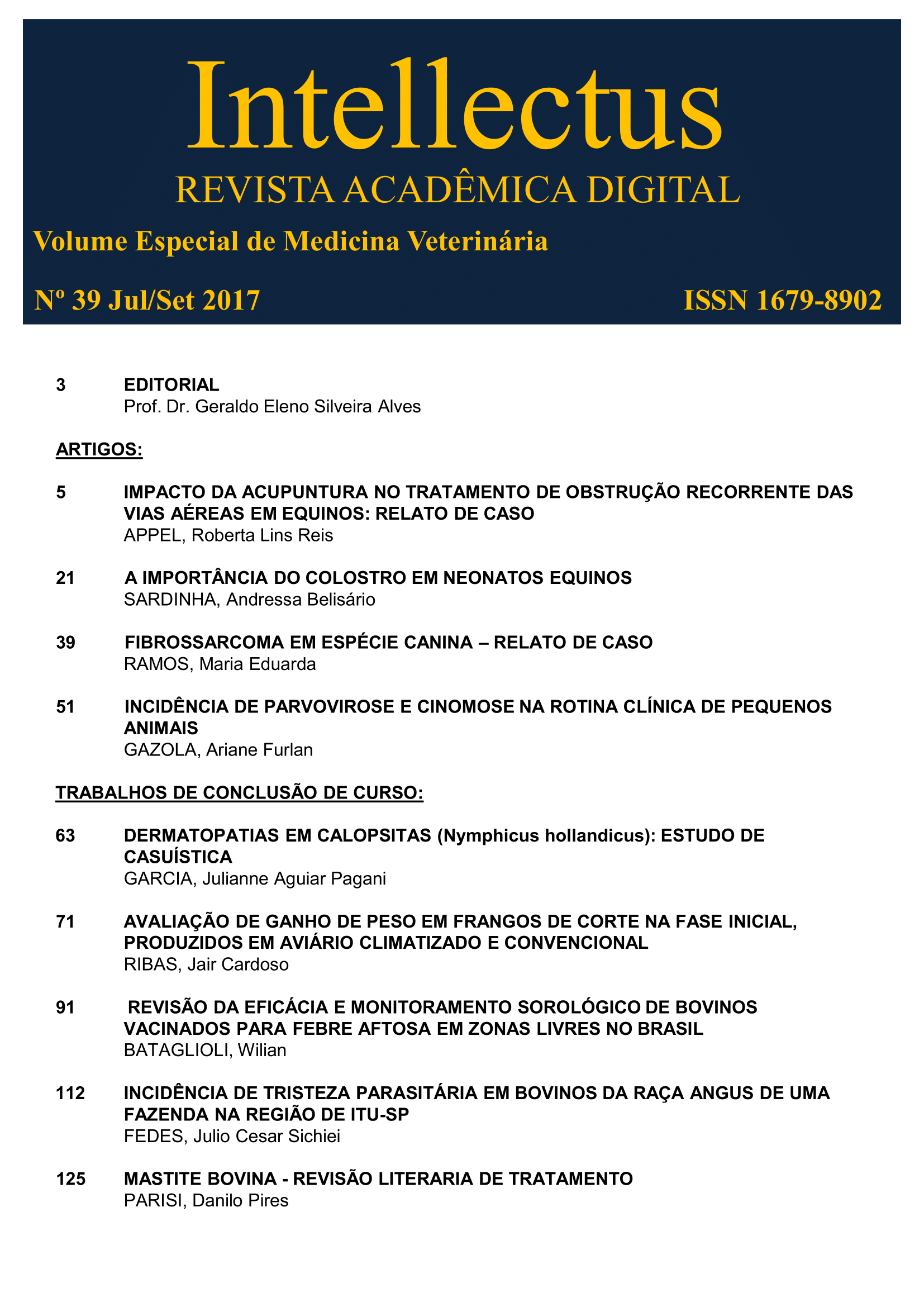Pyometra in Rabbits (Oryctolagus cunniculus)
Literature review
Keywords:
pyometra, rabbits, Oryctolaguscuniculus, PasteurellamultocidaAbstract
Oryctolagus cuniculus, from the order Lagomorpha, has become increasingly popular in Brazil. For being a small, silent and very intelligent animal, is increasingly sought as pet. Their puberty usually occurs between 5 to 8 months in larger breeds and 4 to 5 months in smaller breeds. The reproductive life of females remains active for 3 years on average, and of males from 5 to 6 years. Female ovulation is mechanically induced by the male, occurring from 9 to 13 hours after intercourse. Like any other mammal, rabbits are also susceptible to diseases of infectious character. The cystic endometrial hyperplasia complex or pyometra is a disease that frequently appears in the veterinary clinic of small animals, having its typical characteristics and differentials. The most common agents for the infection of the reproductive tract of the rabbits are generally Pasteurella multocida and Staphylococcus aureus. However, other bacteria should not be excluded. Pyometra is the result of the introduction of Pasteurella multocida into the uterine lumen. Diagnosis is determined by clinical examination, imaging (ultrasonography and radiography) and exudate culture drained from the affected animal's vagina. The ovarian hysterectomy of the rabbits presenting pyometra is the treatment of choice in these cases.



